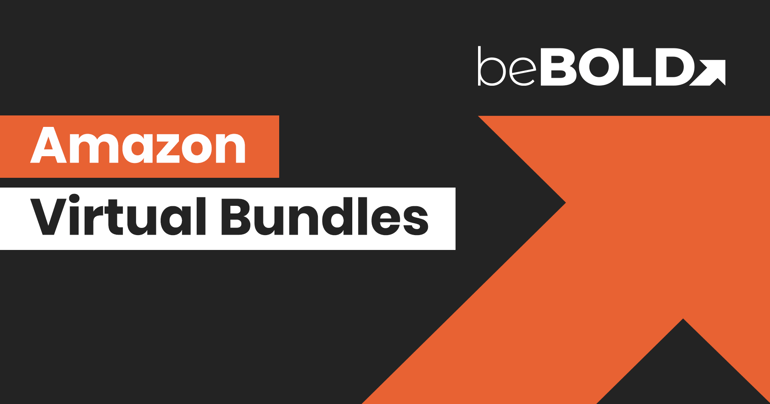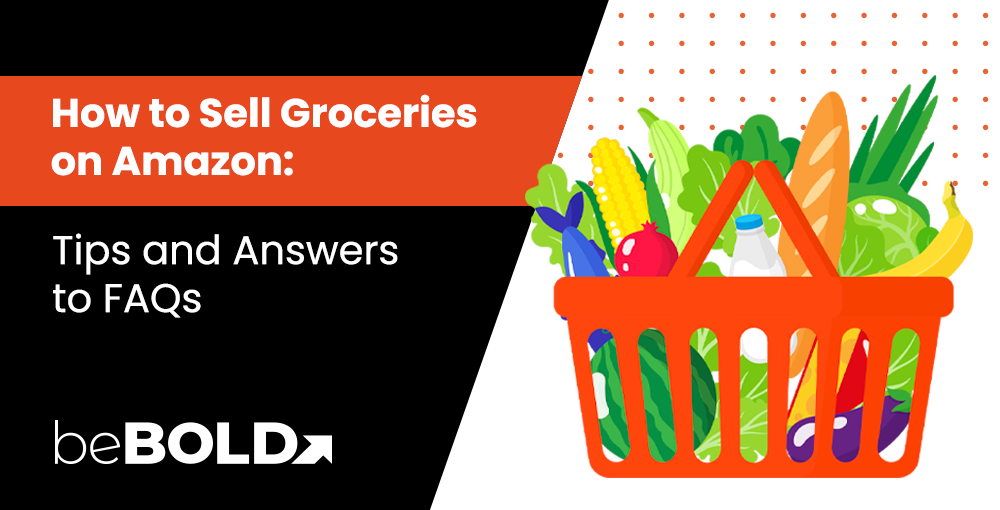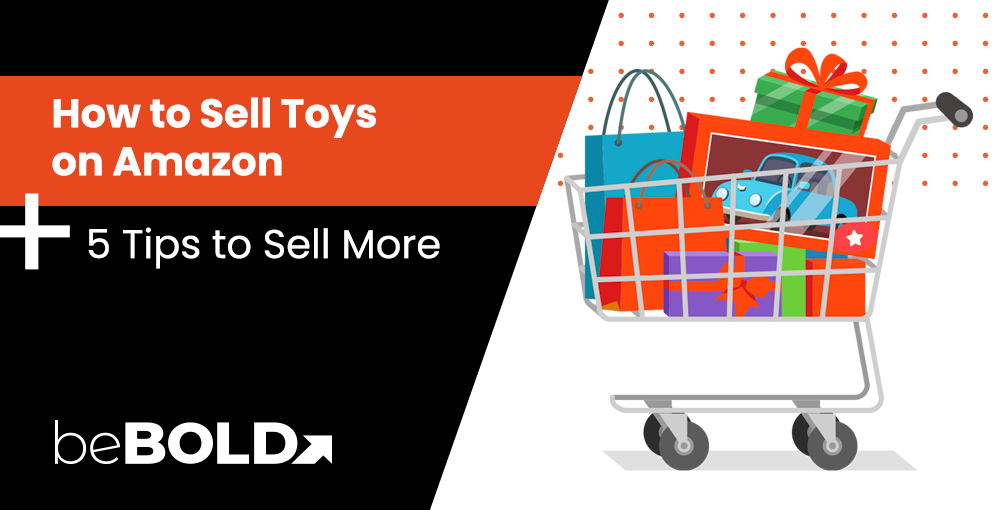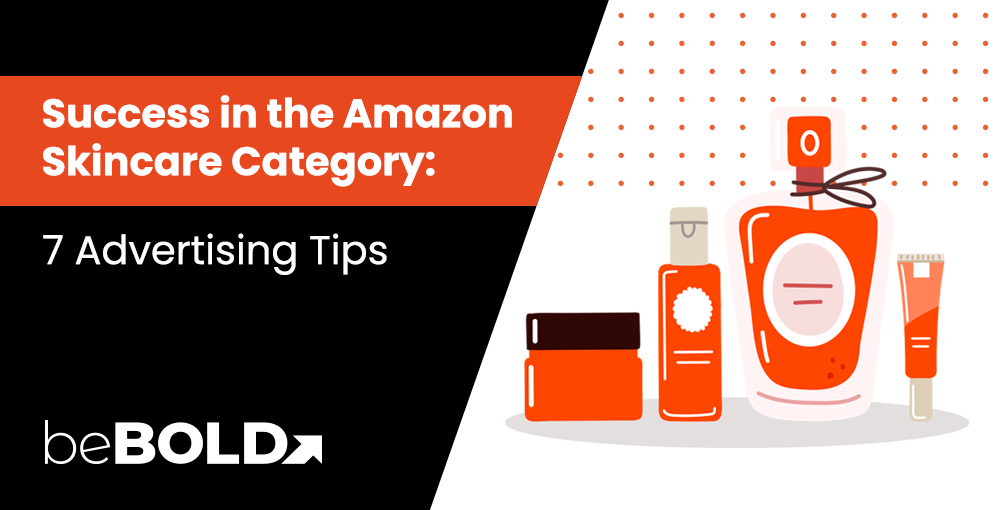The Virtual Product Bundles tool for FBA lets brand owners create bundles made up of ASINs which are purchased together from a single detail page.
Read our article: Amazon Virtual Product Bundles: Strategies to Boost Sales
Table of contents
- What is Amazon Virtual Bundle Program?
- How are virtual product bundles different from normal product listings?
- What all cannot be sold as bundles according to Amazon?
- Why should Amazon Professional and Premium Beauty Brands need to create virtual product bundles?
- How can beBOLD Digital help you master virtual bundles?
Selling multiple products as a bundle is a win-win situation for sellers and shoppers. Shoppers love the ease of shopping because they won’t have to search for related products separately and they get a better deal. For sellers, virtual bundles are a cost-effective and labor-less way to cross-promote and sell multiple ASINs as well as increase the total order value.
But despite the many benefits, not many merchants took advantage of it because of the many hurdles involved. They had to physically pack the products as bundles, send the bundles packages to FBA warehouses, assign the bundle its own UPC and the list goes on. But things have changed now. Enter: Amazon Virtual Product Bundling Program.
What is Amazon Virtual Bundle Program?
Still, in beta, Amazon’s virtual bundle program allows sellers to create “virtual” product bundles of two to five complementary ASINs purchased from a single product detail page. Because the bundles are created virtually, sellers won’t have to fall into the hassle of packing and shipping the items together or make changes in their FBA inbound inventory.
For instance, if you are selling a shampoo as one ASIN and conditioner as another ASIN, then you can use the virtual bundle tool to sell both the complementary products together as one ASIN. All you need is to list the product as a bundle from the backend and Amazon will take care of the rest. Amazon automatically updates bundle quantities based on the stock availability in the FBA centers.
Technically, this tool was rolled out in 2019 and was tested on a bunch of sellers, but at present, it is available to all sellers enrolled in Brand Registry 2.0.
On desktop, Amazon shows the bundle in the Make It Bundle widget and its strategically placed right above the folds:
How are virtual product bundles different from normal product listings?
Before we differentiate between virtual product bundles and regular product listings, let us clear one thing. Bundle listing does not mean multipacks. Bundles should have complementary products that can simplify a shopper’s buying experience of clubbed and sold together.
Virtual product bundle listings and standard product listings look quite alike, but there are some differences. For starters, you cannot run Sponsored Product Ad campaigns for virtual bundles, but you can still use Sponsored Brand Ads to promote your product. You cannot also add any search terms for bundled ASINs. It will inherit the search terms from its main products.
However, you can always add high volume and relevant keywords in the new title, bullets and description. Also, there is no access to sales data for bundled ASIN, as the sales will be directly attributed to the main ASINs.
Who is eligible to use the new Virtual Bundle tool?
Although this tool is very tempting, it’s not open for all. To be eligible:
- Sellers should be a brand registered seller and the ASIN should also belong to your brand
- ASIN should have active FBA inventory in “new” condition
- Sellers can create product bundles only in the U.S. store
- The product bundle should not include gift cards, renewed or already utilized ASINs, and other digitized items
How to create virtual bundles?
Time needed: 15 minutes.
How to create virtual bundles?
- Login to Your Seller Central Account
Log in to your Seller Central account and go to the Product Bundle page
- Choose ASINs you want to bundle
Choose any two or five ASINs that you want to bundle
- Add Images
For your virtual bundle product listing, you can add up to 9 images (the more, the merrier)
- Add Copy and Content
Create a title, bullet points and description for your virtual product bundle and make sure to follow Amazon’s guidelines
- Add Price
Make sure the price of your bundle is equal to or less than what your customer would pay if they purchased both the items separately.
What all cannot be sold as bundles according to Amazon?
Before starting off with creating product bundles, go through Amazon’s Product Bundling Policy as it provides you with all the rules and regulations you need to follow. The general bundle policy states that the following products cannot be bundled:
- Combined branded products
- Generic products
- FBA banned products
- Products containing separate warranty products
- Books, CDs, DVDs
There are also some rules relayed to the bundle ASINs images, titles, and product details that you need to take care of:
- The title should not exceed the 200 characters and you should follow the format decided by Amazon
- You should always include the word “bundle” in the title
- At Least one of your bullet points should mention that the product is a bundle and that it contains these many total items
- The images should not include products that are not included in the bundle
Bundle listing and categorization:
- Bundles must consist of items that are highly complementary (this means items in the bundle enable or enhance the use of other items in the bundle or provide convenience to the buyer by purchasing them together) .
- Bundles consist of multiple single items that can each be identified by a unique ASIN/UPC and are sold together as a single offering. A pre-packaged kit or pack with multiple items that is identified by a single ASIN/UPC is not considered a bundle.
- A bundle may be listed in a single category only, even if the products comprising the bundle are from multiple categories. If a bundle includes products from multiple categories, it may be listed only in the category of the highest priced item in the bundle. The only exception to this guideline is if the highest priced item is BMVD or Video Games (because bundles may not be listed in these categories). In these cases, the bundle should be listed in the category with the second highest prices item that is not BMVD or Video Games.
- The bundle must have its own standard product identifier or manufacturer part number. The identifier of any individual product in the bundle may not serve as the identifier for the bundle. Using a UPC from any single product in the bundle to identify the entire bundle may lead to immediate removal of the listing. You are responsible for obtaining a UPC for each bundle you create.
- Do not include generic products in a bundle, as it may mislead customers into thinking the generic product belongs to the same brand as one of the branded products in the bundle. Generic products are identified as items with no brand whatsoever on the product or packaging (not just widely unrecognized brands).
- A bundle can be composed of different branded items, however the bundle itself should be branded according to the highest priced item in the bundle.
- If an item is a multi-pack, such as six pairs of socks, list it as a single product and not as a bundle. See UPCs and Item Package Quantity for Multi-Packs.
- If an item is a variation of a parent product, list it as a variation within the parent product’s family and not as a bundle. See Creating parent-child variation relationships.
- If you match your bundle to an existing bundle listing, the products in your bundle must be exactly the same as the products in the existing bundle in every respect. If your bundle is different in any way, you must create a new bundle listing. You may not change the existing listing to align to the specifications of your new bundle.
- Once you create a bundle, you may not modify the components of that bundle. If you want to add or remove products from the bundle, you must create a new bundle listing with a unique UPC or match to an existing bundle listing that is identical to your revised bundle.
Why should Amazon Professional and Premium Beauty Brands need to create virtual product bundles?
As the marketplace begins to the clutter, beauty brands find new ways to stay on the top of the tree. There are about hundreds and thousands of Amazon retail beauty sellers popping up, fighting for the same limited amount of seats.
How are you supposed to stand in a market that’s race to the bottom? The answer is simple. Do what Amazon did. Offer your customers a shopping experience they would never forget (and it better be positive :P). And bundles are one of the best ways to simplify the shopping experience of the customers as they can get everything they need at one convenient location. Apart from that, here are a few more perks:
#1: No competition:
Cutthroat competition is the biggest challenge for Amazon professional beauty and Amazon premium beauty sellers. By creating virtual bundles, you are offering customers a set of products only you are selling and chances of finding a seller who sells similar combinations of products are pretty thin.
#2: Get rid of slow-moving inventory:
We all have been there. There are a few products that don’t seem to sell. Turns out that bundles are also a great way to finish off your slow-moving inventory. For instance, if you have excess inventory left because of the COVID-19 pandemic, you can bundle them together, add a discounted price and sell them real quick.
#3: Cross-selling opportunities:
One of the significant benefits of creating bundles is an increase in total sales and order volume. Beauty sellers can bundle high selling products with newly launched or low performing products and skyrocket the overall sales.
#4: Attracts shoppers who want a great “deal”:
COVID-19 has changed the way customers shop. Nowadays, customers are focused on finding products that fit their budget. The virtual bundle created by you lets the shoppers order products at discounted rates without going over the Today’s Deal page or entering coupon codes.
#5: Virtual bundles are simply convenient
The virtual bundling program has made it super simple for the sellers to sell in bundles without having to physically package the products, sending additional inventory or purchasing extra UPCs. It takes all the extra efforts, such as fear of excess inventory and IPI off the seller’s mind.
What are the drawbacks of creating product bundles?
It’s not all roses and sunshine. Just like any new feature, tool and update introduced by Amazon, virtual product bundles too has some flaws:
- If you do not follow Amazon’s precise guidelines, the product bundled can be removed over copyright infringement
- You cannot edit your listing once you create it. I think this is the biggest flaw because for making even a few minor changes, you will have to start from scratch and all the reviews and ranking will be lost forever
- Although product bundling works well with most products, there are some scenarios when shoppers prefer to buy individual products
- You cannot advertise your product with Sponsored product ads
- The bundle cannot be priced higher, or you will lose buy box
Tips for creating profitable product bundles:
Despite the cons, bundles are definitely worth a shot. If you ask me, every seller who has a brand registry should create virtual bundles without any second thoughts. Below I have listed some actionable tips that will help you create profitable product bundles:
#1: Optimize your listing again
Do not make the mistake of using the same copy. Consider the bundle listing as a new listing and optimize it likewise. You will have to find keywords and write new content following the guidelines for bundles. In titles, you will have to respect Amazon’s format and clearly mention that the product is a bundle.
This goes the same for the bullet points. Preferably, the first bullet points should mention that the product is a bundle. Likewise, new images will have to be created too. Your first image should show all the products present in the bundle.
#2: Price wisely
If the price of your bundled ASIN is higher than what customers would pay if they bought the products separately, then there is no point in creating the bundle. Your customers should feel that they are at an advantage if they buy your bundle. Setting the price higher won’t just upset the customers but also Amazon as you are at risk of losing the buy box.
But affordability shouldn’t come in your way of profitability; you should also make a decent profit out of each sale. Use Fulfillment by Amazon Revenue Calculator to get an idea of the final price.
#3: Choose the right category
Your old product category won’t probably work either. Your product bundle ASIN should be placed in the most relevant category. If all of your products seem to have different categories, choose the product category as per your main product.
For example, if you are bundling makeup brushes and makeup brush organizers, then your category would be under Beauty & Personal Care, more specifically Brush Sets.
#4: Bundle relevant products
You cannot just club any item and call it a bundle. The product shoppers tend to buy from your brand together is an outstanding candidate for product bundles. Also, you could try looking at the competitors to identify what type of products to bundle and the best way is to look at Amazon’s frequently bought together section because that never is wrong.
Amazon’s recommendation takes into account shopper’s purchase history, so you can totally rely on it.
How can beBOLD Digital help you master virtual bundles?
This guide will surely give you an overview of Amazon virtual bundles but creating bundles is just a start. Making it work is another story, especially if you are a beauty seller. You will have to put in the same efforts you put into a newly launched product.
At beBOLD, our Amazon Beauty Consultants can help you with content strategy and PPC campaigns to achieve your goal. To learn more about beBOLD and how we can help, please contact us for a FREE evaluation of your Beauty Brand on Amazon.








Comments